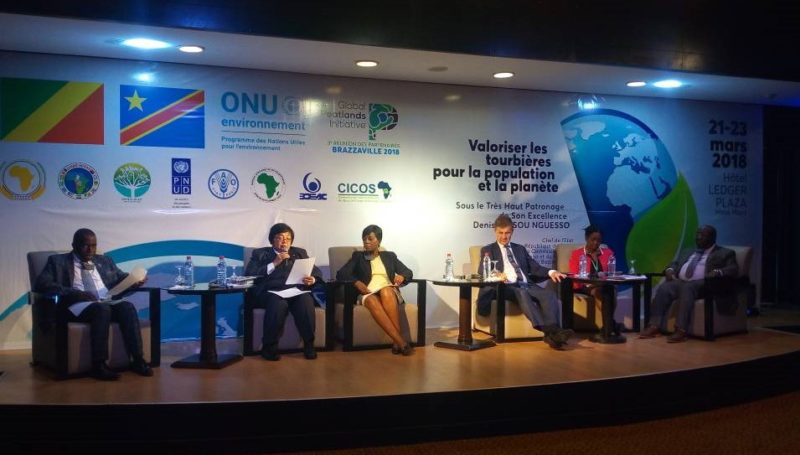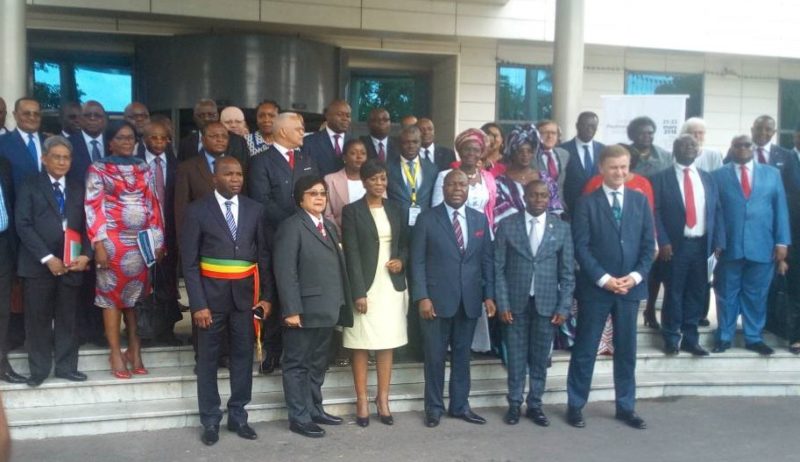The Executive Director of the United Nations Environment Programme (UN Environment), Erik Solheim, has described peatlands as the one of the most unique and interesting ecosystems on the planet.

Solheim made the submission on Wednesday, March 21, 2018 in Brazzaville, Republic of Congo, during the Third Meeting of the Partners of the Global Peatlands Initiative (GPI).
Peatland is land consisting largely of peat, which is a heterogeneous mixture of more or less decomposed plant (humus) material that has accumulated in a water-saturated environment and in the absence of oxygen.
The peatland is home to a number of species like the gorilla and, via eco-tourism, it is a source of income for people living there, Solheim stated, even as he justified why protecting peatland is key for the two Congos (Republic of Congo and Democratic Republic of Congo).
Besides fishery, the UN Environment boss stressed that peatlands are also a main source of water for local communities, who he advised to refrain from destroying the peatlands because of telling consequences.
“Destroying peatlands is a source of health hazard to the people, as such a step easiliy leads to fires and smoke, which are destructive to property and human health. Don’t destroy the peatland because it will come back hurting the local population through fires as it has done in South East Asia,” he said, adding that the peatland is also the greates stock of carbon on earth.
Indeed, the peatlands in the Cuvette Centrale (or Central Basin), a region of forests and wetlands in the Democratic Republic of the Congo that extends into the Republic of the Congo, are estimated to hold about 30 billion tonnes of carbon – equivalent to more than 15 years of carbon dioxide emissions from the United States.

Scientists say that the Democratic Republic of the Congo and the Republic of Congo are the second and third most important countries in the tropics in terms of peatland area and carbon stocks after Indonesia.
The near-pristine peatlands of the Congos are said to be globally signicant and are an important source of ecological stability for the entire region and home to unique animals and plants. The Congo Basin has been inhabited for more than 50,000 years and is today home 75 million people who need it for shelter, food and fresh water.
The Global Peatlands Initiative is an effort by leading experts and institutions to save peatlands as the world’s largest terrestrial organic carbon stock and to prevent it being emitted into the atmosphere. The current greenhouse gas emissions from drained or burned peatlands are estimated to amount up to five percent of the global carbon budget – in the range of two billion tonnes CO2 per year.
Partners to the Initiative are working together within their respective areas of expertise to improve the conservation, restoration and sustainable management of peatlands. In this way the Initiative will contribute to several Sustainable Development Goals, including by reducing greenhouse gas emissions, maintaining ecosystem services and securing lives and livelihoods through improved adaptive capacity.
One of the first outputs of the Global Peatlands Initiative will be an assessment, which will focus on the status of peatlands and their importance in the global carbon cycle. It will also examine the importance of peatlands for national economies.
Global Peatlands Initiative Partners include: Democratic Republic of Congo, Republic of Congo, Republic of Indonesia, and Peru, who are the countries represented.
The international organisations are: UN Environment, Food and Agricultural Organisation of the UN, International Fund for Agricultural Development, UN Convention on Biological Diversity, RAMSAR Convention, UN Environment World Conservation Monitoring Centre, GRID-Arendal, Greifswald Mire Centre, Wetlands International, World Resources Institute, Wildlife Conservation Society, European Commission – DG Joint Research Centre Land Resources Unit, Global Green Growth Institute, International Peatland Society, International Union for Conservation of Nature, Centre for International Forestry Research, and Global Environment Centre.
The meeting comes to a close on Friday, March 23.
